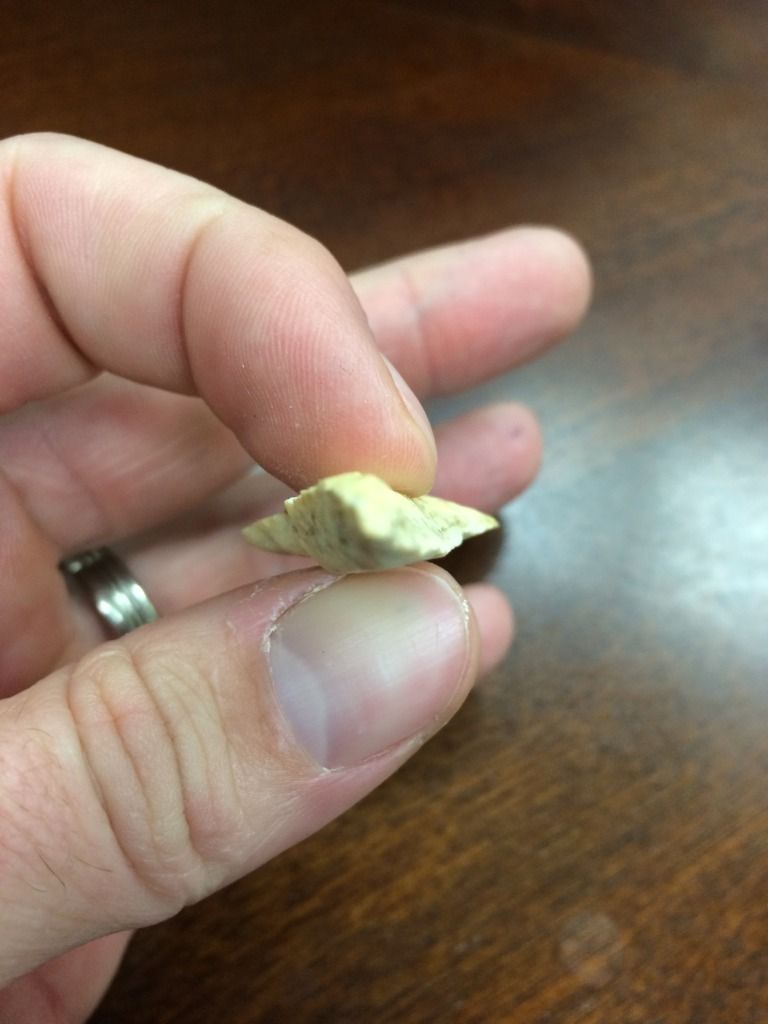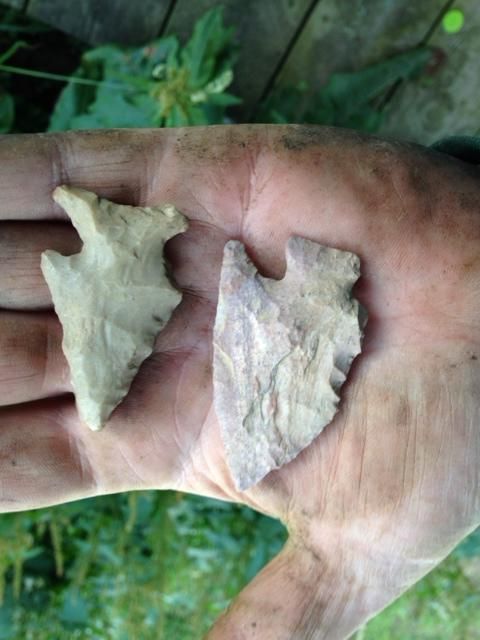Beveled points why? Skinning hides. The bevel would work. To separate. With would steeping the hide without damage. Two think about the bevel would tell which way right or left was handed. This has bugged me for a long time. Why because it made no sense. But the bevel gives a separation without intrusion. JMO
Announcement
Collapse
No announcement yet.
The Bevel ?
Collapse
X
-
A steep bevel mad a point penetrate well without sacrificing thickness and thus spine strength. In East tx, Golondrinas particularly were resharpened with a bevel as the point neared exhaustion in order to salvage it a few more uses. There once was a Type called MESERVE. in my opinion , mererve isnt a type but a beveled resharpening style used by several different groups.
-
i only have one point with a well defined, true bevel,and its only the bifurcated that ive found (so far!).

i colored in underneath what is (the tips of the shoulders) and was broken off and resharpened.notice along the left edge (hard to tell from pic's i know) see how the symmetry is off,im pretty sure the tip was snapped off anciently and resharpened to make it serviceable again. from the pic, when i flip it over and point it away from me and hold it on on a piece of leather i can tell from the angles thats how the "fixer" re-tipped it.

you can even still see whats left of the original serrations on the right edge and how he tried re-serrating the fixed edge. i think it was an easy way to put a new tip on something that only lost a bit of the tip.if the piece broken clean in half i dont think the angle would work for that kinda technique without havin' to dig into the other side. thats my guess.
call me Jay, i live in R.I.
- Likes 1
Comment
-
I didn't understand the purpose of a bevel until I asked Someone here at this site!
Comment
-
scrapers are a whole different story though. ive made and used stone and bone scrapers to process hides before, and ive found if you try using a bifacially worked 'knife" to scrape, the fat and membrane just kinda smears around (if you've fleshed a hide you know what i mean),you dont get a good "bite" on it. but a beveled edge like a steep edge scraper pulls the tissue towards you as you work and its easily flicked away.now if yer skinning say, a deer. its hanging upside down from a tree and picture you have a stemmed scraper set into the top left end of a( 7 )shaped stick, after you've made yer first cuts and are starting to work the hide down its attached kinda in spots, now like Chase said, that beveled edge is gonna get between the hide and body and help yank it apart and peel away the tough spots. the same kinda beveled scraper set into a straight stick about 2 feet long is also a great tool for working a hide thats stretched on a frame or pinned out on the ground. the same tool works perfect for scraping wood and bone as well. ( i can think of more but wont rattle on)
( i can think of more but wont rattle on)
call me Jay, i live in R.I.
Comment
-
Good Topic but I don't think there is only one answer. Regarding the big points, i.e. Kirk/Lost Lake The only thing separating the classifications is the bevel and in my opinion it was simply the mode of sharpening the point/knife to get the most out of it before having to make a new one. As for left or right? I think as we are most were right handed and when they taught their younguns, it was done only one way. BUT, I also have some very small dalton points (less than an inch) with bevelling such that the tip is about 70 degrees off from the base. Why? Beats me. The points had to be mounted i.e. projectile but cannot really say why the bevel. It seems if it were to have provided much of an advantage in use, all of them would have it.
Comment
-
i agree,theres always more than one answer. i didnt mean to imply ALL beveled points were made from that side, just an observation on my own, but ya, most people are right handed.i think it mattered more on where the break is. and yes, it is a much easier way to quickly re-sharpen something too. i can only speak from my own experiences with playing around with stones, and im no expert !Lithophylic wrote:
Good Topic but I don't think there is only one answer. Regarding the big points, i.e. Kirk/Lost Lake The only thing separating the classifications is the bevel and in my opinion it was simply the mode of sharpening the point/knife to get the most out of it before having to make a new one. As for left or right? I think as we are most were right handed and when they taught their younguns, it was done only one way. BUT, I also have some very small dalton points (less than an inch) with bevelling such that the tip is about 70 degrees off from the base. Why? Beats me. The points had to be mounted i.e. projectile but cannot really say why the bevel. It seems if it were to have provided much of an advantage in use, all of them would have it.
call me Jay, i live in R.I.
- Likes 1
Comment
-
in my experience with flintknappingKyflintguy wrote:
I always just thought of beveling as the quickest way to put a sharp edge on the blade without drastically reducing the blade width, giving longer blade life :dunno: interested to hear SGB's Flintknapping perspective. ...
beveling an edge makes for a more durable edge,plus it helps keep the width which makes for a longer service life of the point/blade
plus it is much quicker than sharpening the edge from both sides
not to mention that after several resharpenings,the beveled edge gets a realy cool twist look to it
Comment
-
[QUOTE]sneakygroundbuzzard wrote:
in my experience with flintknappingOriginally posted by Kyflintguy post=150154I always just thought of beveling as the quickest way to put a sharp edge on the blade without drastically reducing the blade width, giving longer blade life :dunno: interested to hear SGB's Flintknapping perspective. ...
beveling an edge makes for a more durable edge,plus it helps keep the width which makes for a longer service life of the point/blade
plus it is much quicker than sharpening the edge from both sides
not to mention that after several resharpenings,the beveled edge gets a realy cool twist look to it
That's been my experience too. I was looking at photos of a Harahay knife the other day and to me the style and bevels are a great example of the resharpening process. Those blades were used by hunters processing very large animals like bison. I imagine the blades s probably went through a sharpening or two Just in the act of butchering one buffalo. Let alone several. A quick sharpening on one edge , flip and repeat. Simple but effective.
Josh (Ky/Tn collector)
Comment
 inch: sorry about the shadow under the bifurcation, thats not colored in, i stopped just underneath the missing tips of the shoulders.
inch: sorry about the shadow under the bifurcation, thats not colored in, i stopped just underneath the missing tips of the shoulders.





Comment